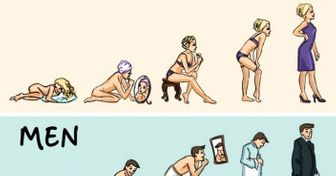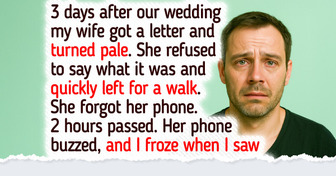Pamela Anderson Surprised Everyone by Wearing Her Iconic 90s Makeup and Fans Say the Same Thing

It has been proven that a child’s worldview settles by the time they turn 11 years old, and they become capable of evaluating the world as an adult, solve problems and even make plans for future. Before this age, children perceive the world differently than adults do. Kids still don’t have enough experience and knowledge to understand how this world operates, which is why they see things in a different light. Scientists have found out what the true difference is between the worldview of children and adults.
To help you better understand this theory, Bright Side wants to help you to see the world through a child’s eyes.
Until a certain age, little kids can’t see the difference between a fantasy and reality. That’s why they are sure that the events they have made up in their minds exist in reality. Though, it’s worth mentioning that if a child made something up on their own, then they wouldn’t doubt it in their fantasy. However, if a child hears something remotely possible from another person, then they wouldn’t believe it as much as adults don’t. A number of tests showed that there is a very fine line between fiction and reality in a little kid’s perception because they still don’t understand which knowledge is true and which is false.
It is a proven fact that children younger than 11 years old can think only about present reality, and can’t think abstractly.
The psychologist, Rudolph Schaffer, conducted an experiment where he asked two groups of children to find a place on their body to place a third eye on. All the children of the first group aged 9 years old pointed at their foreheads because they had their two eyes there. The second group consisted of 11-year-old children who were able to think abstractly, so they began to offer different options like placing the eye on their palms because this way they could see from behind.
Children can learn languages quite easily while it’s a bit harder for adults. Linguist Noam Chomsky, explains this with the fact that there is a certain common toolbox built into a human’s brain that connects all syntax rules of all existing languages. In addition to that, millions of brain cells are responsible for a child’s perception and reproduction of speech which build complicated conducting systems. Such systems finish their development by the time a person is 10 years old. That is why the older you are, the harder it is for you to learn a new language.
Children under the age of one year old are sure that an object they can’t see disappears forever. A psychologist, Jean Piaget developed a theory about the permanence of objects further and proved that knowledge of an object’s existence beyond our field of vision comes with age. A small child is too inexperienced to comprehend that the object they can’t see any longer continues to exist.
Scientists claim that new-born babies can’t distinguish faces due to lack of experience. Additionally, their vision is not focused and they see objects blurred.
A certain experiment proved that babies under 6 months old are incapable of distinguishing the faces of different people, but by the age of 9 months, they are able to adapt and begin to distinguish the faces of those they know from the ones they don’t. By the age of one year, their sight becomes focused and they can see objects crisply and colorfully.
Children lack a sense of reversibility. That is why if you place two glasses of different sizes in front of a child and pour water from a tall glass into a wide one, a child will be sure that the amount of water became bigger. Until the age of seven, children believe that if the shape of a glass has changed, then its contents have also changed. It is also believed that children can’t combine two dimensions of height and width until a certain age, focusing their attention only on one of the two dimensions.
It is a well-known fact that a child’s motor functions are not yet fully developed, thus they draw worse than adults because they can’t keep a pencil in their hand steadily.
However, there is another very interesting fact that was discovered during an experiment. Children from ages 5 to 9 years old were given the task of drawing a cup which was placed in a way that they could see its handle. Despite the fact that the handle was out of their sight, all the children under 7 years old added it into their drawings. Conversely, the children older than 7 years old drew the cup without a handle.
Psychologists concluded that this was the main difference between a child and an adult. If an adult is given a task to draw an object they see, they will draw it exactly this way, while children add elements that they can’t see but know should be there.
The understanding of morals by children is different from that of adults. Adults know which action is good and which is bad, and are also well-versed in the universally accepted norms that they may break from time to time.
When it comes to morals, everything is much easier for children. Initially, the behavior of small children is based on the intention of avoiding punishment for wrongdoing. More senior children understand morals as a type of behavior which can be awarded. Each stage of growing up forms internal moral arguments which the majority of adults adhere to.
The results of this research confirm this fact. The children participating in the research study were asked, “What is worse: to break a pair of glasses on purpose, or two pairs by accident?” The majority of children replied that a person who broke more glasses is worse because they did more harm than the one who broke just one pair.
The theory of mind refers to understanding that not all people possess the information and experiences that you do. For children, this way of thinking comes only at a certain age.
This was discovered during an experiment called Sally Anne. There are two adults and a child in the room. When one adult leaves the room, the other adult hides a toy. When the first adult comes back, the child is asked where this adult should look for the toy. The experiment showed that children under age of 3 pointed at the real place of the toy, not paying attention to the fact that the adult who returned to the room doesn’t know where it had been hidden.
Did this article change the way you think about children and how they think? Leave your thoughts in the comments.











